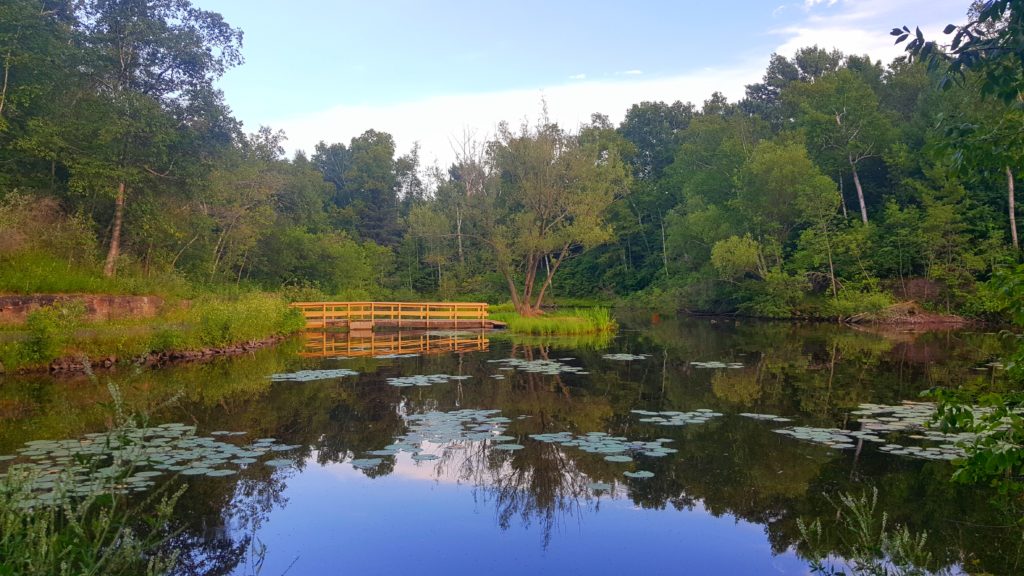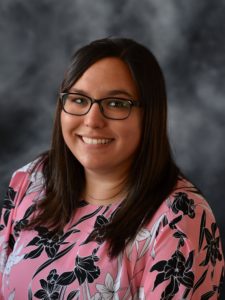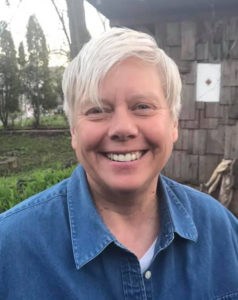Restoring piping plover habitat on Wisconsin Point
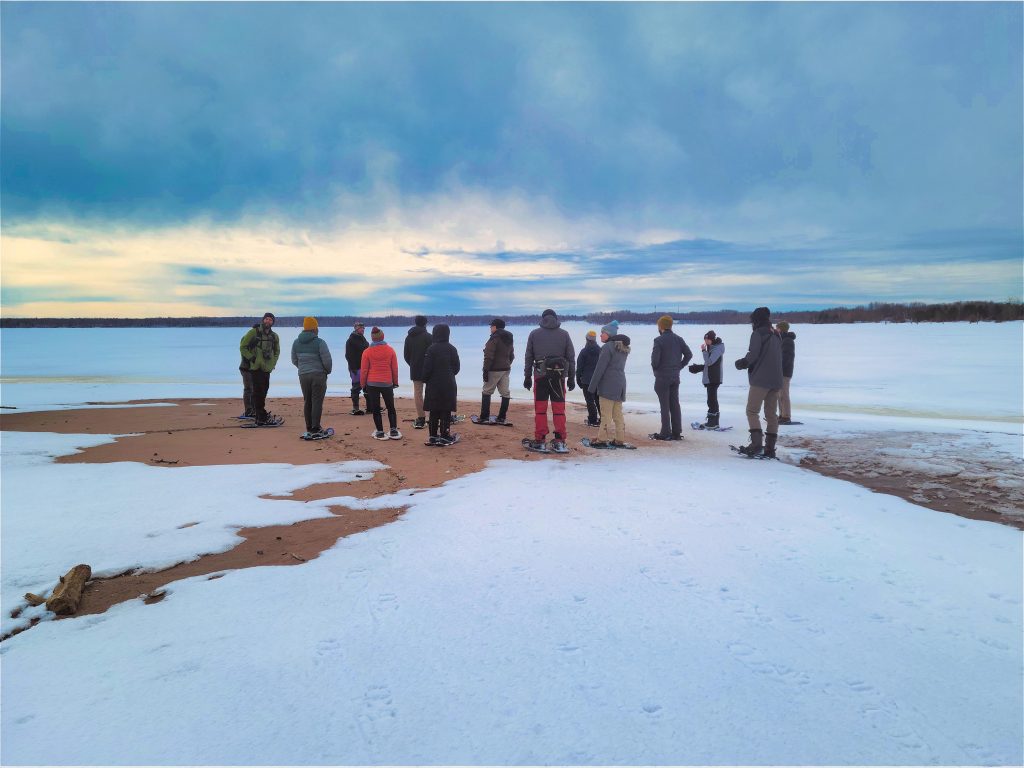
Field trip participants with the St. Louis River Summit learn about efforts to encourage piping plovers to nest on Wisconsin Point. Image credit: Marie Zhuikov, Wisconsin Sea Grant
I participated in a field trip during the recent St. Louis River Summit that involved snowshoeing out to a bird sanctuary on Wisconsin Point, which is near Superior, Wisconsin. The sanctuary is a protected area on a sandy spit of land, specifically designated for endangered shorebirds called piping plovers (Charadrius melodus).
I enjoy any opportunity to visit Wisconsin Point, but I also attended because I was involved in early habitat restoration efforts for these cute little birds before I worked for Wisconsin Sea Grant. I was interested in hearing the latest intel about their status.
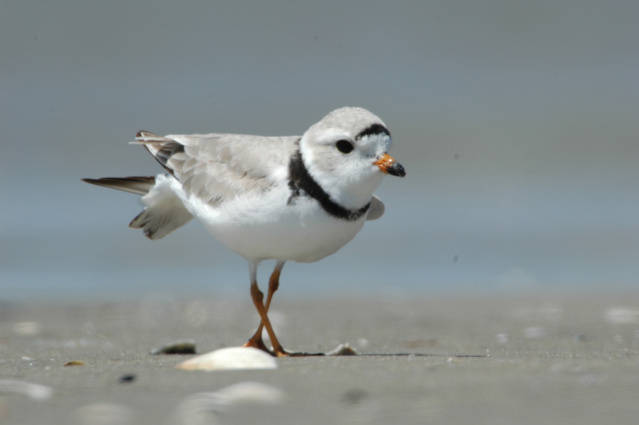
A piping plover. Image credit: U.S. Fish and Wildlife Service
The St. Louis River Estuary had breeding plover pairs up until 1989. The last nesting pair was seen at this bird sanctuary site. Plovers, which look like killdeers, prefer large isolated beaches for nesting. Much of this habitat type has been lost due to development and recreational pressure. Work to increase the population of plovers is going on all across the Great Lakes and in other parts of the country.
Matt Steiger, St. Louis River Area of Concern Coordinator with the Wisconsin Department of Natural Resources (DNR), led the field trip along with David Grandmaison, St. Louis River wild rice and habitat restoration coordinator with the Wisconsin DNR.
As we snowshoed out to the end of the beach in a cold wind from the northeast, Steiger explained that several projects had taken place on the site over the years to make it attractive to plovers and common terns. The latest was begun with Great Lakes Restoration Initiative funding in 2019, which involved enlarging the beach with clean dredged sand. The goal was to create habitat that would last despite changing water levels in the harbor and storms and would require minimal maintenance. Fourteen acres of nesting and foraging habitat were created along with three “nesting pans” composed of small cobblestones that plovers prefer.
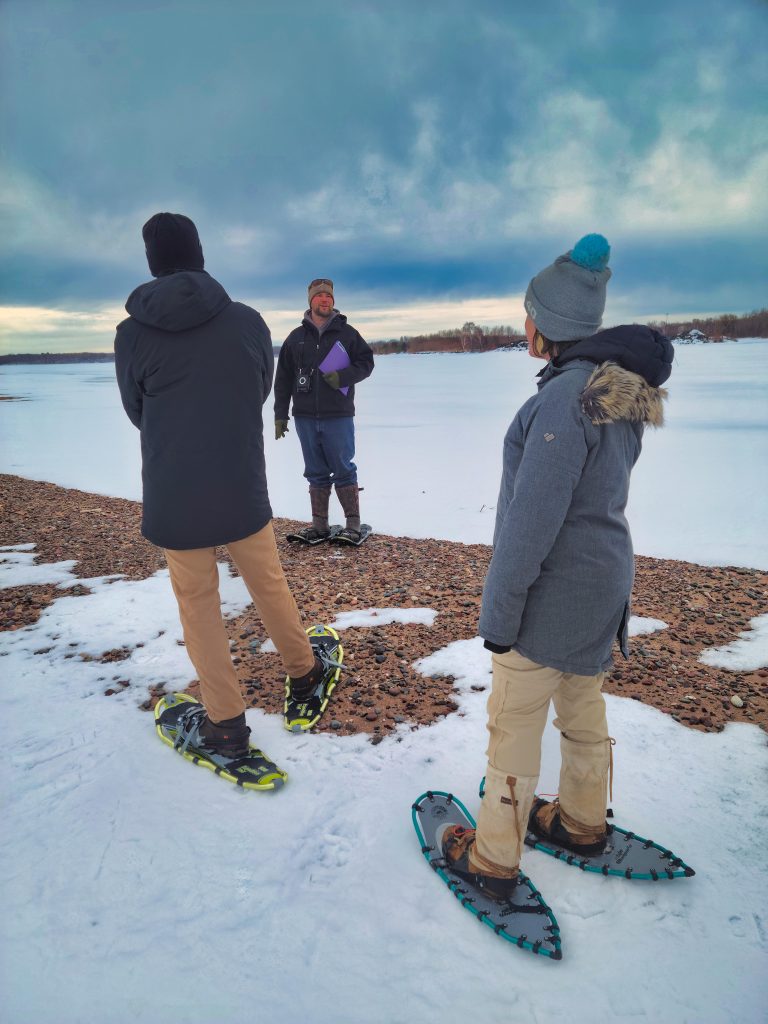
Matt Steiger, WI DNR, (center) discusses the Wisconsin Point Bird Sanctuary restoration efforts to field trip participants. Image credit: Marie Zhuikov, Wisconsin Sea Grant
Piping plover monitors coordinated by the St. Louis River Alliance have kept their eyes peeled for any plovers on this site and others around the estuary. So far, none have nested, but sometimes these efforts take time – decades, even. Steiger said that a female plover was spotted in the sanctuary during the spring 2022 migration season at the same time a male was spotted on nearby Minnesota Point. Let’s hope that someday two plovers will land on the same beach at the same time!
In other areas of the state, Wisconsin Sea Grant has played an integral role in habitat restoration that benefits piping plovers. Our staff were involved in the Cat Island Restoration Project in Green Bay, which created 1,400 acres of barrier islands in Lake Michigan that had previously disappeared due to high lake levels and storms. In 2016, for the first time in 75 years, endangered piping plovers successfully nested on a restored island there and fledged chicks.
Sea Grant was also involved in an earlier effort on Wisconsin Point’s Shaefer Beach to create plover habitat. We were involved in initial design discussions for the bird sanctuary work but are not currently participating. For more information, see this cool post and videos on the Perfect Duluth Day website.
At the end of the tour, Grandmaison described work going on in nearby Allouez Bay to restore wild rice beds. Historically, wild rice was abundant in Allouez bay and throughout the estuary, providing an important food source for Native Americans. Wild rice beds also provided habitat and food for birds and wildlife. Their abundance in the estuary declined significantly in the past century, and today only a sparse remnant stand exists in Allouez Bay. Wild rice seeds were spread throughout the bay. Exclosure fencing was installed protect the seedlings from browsing pressure of Canada geese.
As I snowshoed back to my car, I remained hopeful that someday, Wisconsin Point will be home to nesting piping plovers and lush stands of wild rice, thanks to these efforts.
The post Restoring piping plover habitat on Wisconsin Point first appeared on Wisconsin Sea Grant.Blog | Wisconsin Sea Grant
https://www.seagrant.wisc.edu/blog/restoring-piping-plover-habitat-on-wisconsin-point/?utm_source=rss&utm_medium=rss&utm_campaign=restoring-piping-plover-habitat-on-wisconsin-point

